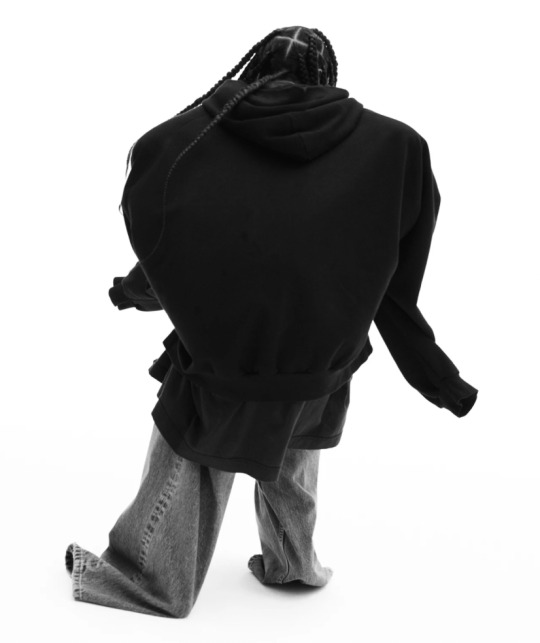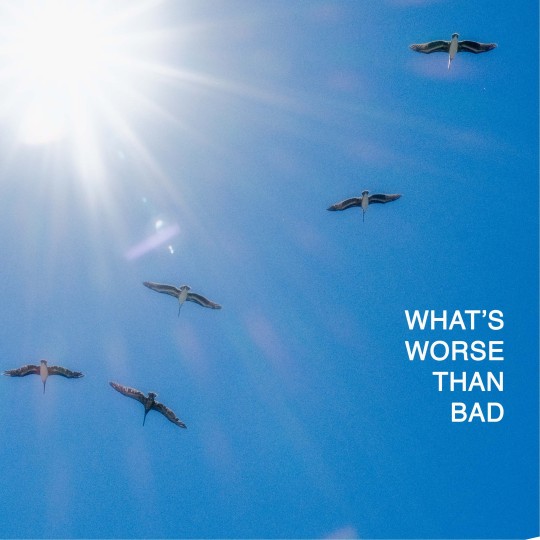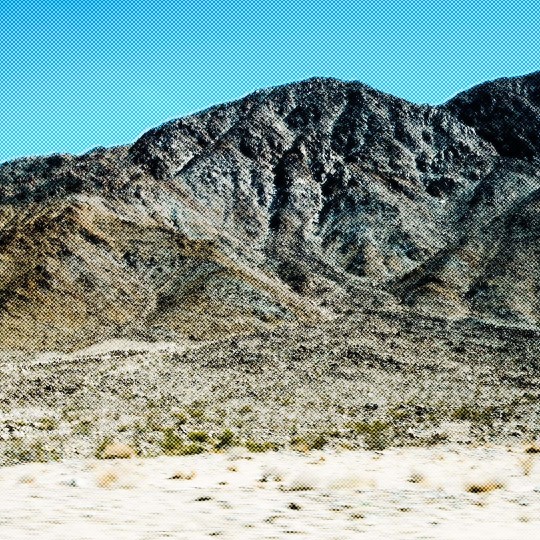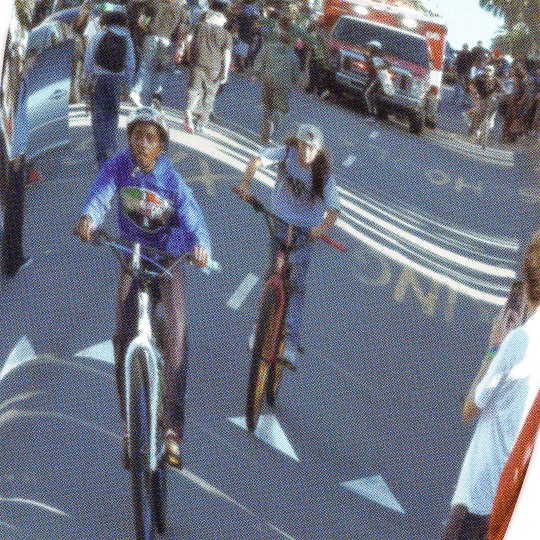STUDY THE RULES, THEN FORGET ABOUT THEM A digital notebook of my studying journey of photography and journalism. I share my own thoughts, opinions and projects
Don't wanna be here? Send us removal request.
Text
I love this because I see myself being lazy and stuck scrolling, but also when I'm so inspired and want to continue exploring
there are so many things that I want to do. I think I will stay on my phone for 2 more hours
104K notes
·
View notes
Text
Is Journalism a dying industry?
Radio, TV and print struggle against declining audience numbers. For an industry labeled as anything but slow paced, how does it react when a serious player has established itself in the game?
"About 40% of American Adults often get their news from an online source" says the Textbook, Writing and Reporting for the Media. That number rises to half when looking specifically at those between the ages 18-49. "Facebook and Youtube are the most popular social media sites to find news, according to a Pew study in 2017."
News publishers have adapted their business model to support this shift. Journalists can tweet news in real time and articles can be multimedia. Print readership is down and online subscribers are up, but this age of information also supports misleading, provocative or even false information to attract attention for ad revenue.
"Many people do not trust the news they find on social media," says The Textbook. Everyone has a voice on social media, especially misinformed ones. The problem isn't that they are misinformed, but they share the same space as those that are. Like Pulitzer Prize winning reporters.
Sharing the same space muddies the credibility and ethics of professional journalists when click bait is attractive and easy to engage with. They give readers entry points to the article, and more importantly, ad revenue. A complex double edged sword.
Are publishers bending over backwards for the sake of clicks? Do important stories get sidelined? Do ads allow publishers to survive? Is there another way to sustain the business?
The Austin Chronicle and KUTX have relatively few corporate ads and have regular fundraising events. Larger publications like The New York Times require a subscription, but supplement with fewer targeted ads.
In 2017, millennials were the largest group to pay for news, almost 40% of them according to a Reuters report in Politico. Does that still hold up in a "post" COVID-19 America? As we approach the election, free click bait authors will again flood our feeds and dodge responsibility.
"All news outlets need trained journalists with high standards," says the Textbook. But what separates click bait from the writing by trained journalists?
As a journalist, I can say we are being trained in ethics, storytelling, research and multimedia. We are being tested on the accuracy of our investigations. We are being encouraged to participate in culture and civics. We are held accountable for mistakes and misrepresentations. The news industry is not slow nor stagnant. We are learning how reporting has been done in the past to adapt to new ways for the future.
I hope that readers can avoid provocative posts and seek journalists, even if it is behind a paywall.
0 notes
Text
Corporate Infiltration of online Trends
Brat summer and "Kamala is brat" has made huge waves this summer. The dust has settled and got me thinking - how deeply do corporate entities participate, propagate and produce trends?
Pop culture commenters (like podcasts and YouTube channels), reputable news outlets and friends reference trends as part of their understanding of the internet and peoples' behaviors... but what if those trends aren't real reflections of people's behaviors?
I have friends whose jobs are centered around social media. They've taught me about "organic social media" where brands strategize to push content that audiences will share out themselves. Essentially relying on social media users to spread advertisements.
[find instances when brands are the source of a trend]
Brat summer (work it out on the remix, Kamala is brat, Katy Perry referencing brat, etc)
Hot girl summer
Espresso
All I can think of is music lol
[find instance when brands participate in 'real' trends]
different types of "core" and "aesthetics"--- punkcore, underconsumption core, kawaii (are these trends or longer lasting aesthetics? )
All I can think of are fashion trends
0 notes
Text




I was tasked to photograph buildings and encouraged to play around with how to present it. My city has plenty of looooong strip malls and I wanted to show how (almost comedically) long they were. But how? I can't fit it in the frame. I landed on this idea: shoot with a prime lens, photograph different sections of the building from a consistent distance, and look out for parking lot traffic. Sloppily stitch them together in google slides. It's an assignment not a print so I didn't worry at all about the polish of the editing, just enough to translate my idea into imagery.
If I could do it again I would
Use a different lens. My 35mm prime is really fun to shoot on. Probably my favorite lens. It has so much character and imperfections. Which is precisely why I should've gone with the 50mm. There is no vignetting, images are crisp and professional and I know exactly how images will turn out. No "character" of the lens coming out to play. Just my view.
Shoot in RAW. I shot in jpeg because I wanted to get it right in camera. They turned out too blue (shot at 8pm), and too underexposed for my liking. Even if I am confident in how I'm shooting, the RAWs are a nice backup. It's 2024. I can use the tech to support my goals, but it should not supplement my technique.
Give myself more time to shoot. I hate to admit it, but I left the assignment on the table until the last opportunity. While shooting, I wish I had more time before it got too dark. I felt rushed. I had ideas how to improve already, but I couldn't go back to improve those old shots. I could only apply it moving forward, like omitting distracting elements like cars or pedestrians.
Use a tripod. I could line the photos up pretty well in post, but I think having a tripod would enhance the realism of these long buildings. My shots would more consistent in framing, leading to a more surreal final image after stitching.
My idea was inspired by a photo by Chris De Bode, Exodus from Libya, featured in Aperture no. 214. The repetition makes it hard for me to find a beginning and an end. It's subjects chaotic while setting is sound and structured. Both of those elements bring the peoples' voice to the front "We are being exiled by our country. We have no choice but to leave." My photographs aim to hear the voice of these buildings. What do they say to you?
3 notes
·
View notes
Text
Reading this essay at the time I'm putting together a photo story on nightlife couldn't come at a more convenient time. It’s a perspective and question: why is scrolling in bed a mainstream hobby? What happened to partying? Why do people view partying as cringe?
My perspective is that nightlife is more of a vehicle for community. There are people who go out to find and strengthen relationships. It’s a means to be with your friends, not a destination to glamorize or instill fomo. My previous post goes into more detail. https://www.tumblr.com/principles-of/758674874963312640/our-phones-connect-us-to-friends-family
#photography#nightlife#clubbing#substack#house music#photographers on tumblr#original photography#opinion
0 notes
Text
The dreaded opinion
It's well known that news articles are biased. Bias gives us personality. It is the color of our experience. So why is it covertly hidden within respected news publications? If explicitly stated as an opinion - backed by citations, quotes and regalia of evidence - readers would have more agency in choosing what to side with.
Reports disguised as facts have been used to weaponize ideas. Does this happen with Opinion tagged reports? In my personal experience, no. As of now, I'm no journalist (yet). This is just an opinion and looming question born from frustration preparing a potential photo story.
The frustration: Does the respect meter decline when journalists primarily write opinion pieces? Are they perceived to be a keyboard warrior? At the end of each opinion fueled fact I type out, my head screams. I want to be a respected journalist that write about the things I care about. Care means biased. Biased means driven by opinion. Maybe I'll learn more once I step into a journalism course. At least I hope so.
All in all, this is my fear when stepping into the unknown industry of journalism. Are opinions respected....?
Will I be respected?
0 notes
Text
Our phones connect us to friends, family, entertainment, inspiration, work, hobbies, finances, calendar, 4 email accounts, games, sex, drugs and our facades. Does it really need to do everything? We don't need an app for that anymore. Yes, it's a powerful tool when used responsibly, but who teaches us what is responsible? Are we responsible with our phones? Will we be responsible with AI?
My relationship with my phone is fueling my next project. Nightlife as community spaces. America is in a loneliness epidemic and it's not outlandish to say our phones could have been the catalyst. Regardless, nightlife gets a bad rap.
It's more than a space for drinking, celebrating bachelorette parties and tending to your vices. It's a space for community building. From the pre-game to meeting friends of friends at the function, nightlife is the vehicle for socialization, not the destination.
So... here are some drafts of the imagery. Drafts of the vehicle, not the destination. The means of partying. The reason we go out, but not the reason we stay. A fight on the dance floor against loneliness.



Any thoughts?
0 notes
Text
An artist spotlights an issue within the arts and actually does something with it.
instagram
OPINION: FKA shares via instagram that her testimony protected visual artists voice. Introducing the No Fakes Act.
Artists are now protected from being visually being copied by AI. [what is the No Fakes Act]
AI is going to take away an artist's existence. FKA in the testimony said, “those who control it hold the power to mimic the likeness of my art, to replicate it and falsely claim my identity and intellectual property. This prospect threatens to rewrite and unravel the fabric of my very existence. We must enact regulation now to safeguard our authenticity and protect against misappropriation of our inalienable rights.”
She's an artist who saw a problem and used her platform bring light to and act against an issue. [why is it an issue?] Its an issue because the original artist can suffocate a cease to exist among ai generated fakes.
It cannot be the way that only artists fight for their right to exist. We consumers must also fight to protect. The resources are out there to get started. Speak to Austin city council.
1 note
·
View note
Text
I see many comments of the article IG post about nepotism, losing her childhood, overall negativity that the article even exists. But I find it as a great piece of pop culture journalism.
The opening line "In a climate that venerates celebrity and configures fame as power, North West is the inheritor of a complicated crown" recognizes the kind of society we live in. Celebrities are pseudo royalties and North West is the inheritor of America's (debatably) most famous mother, Kim Kardashian and talented, yet divisive artist Kanye.
What does a 10 year old want to say when you've grown up knowing you're on millions of peoples phone screens?
She. Loves. It.
----------------------------------------

I thought the styling and photography was lovely too. In her interview she mentions that she looks up to her parents a lot. So BAM, image of North waddling around in her parent's oversized clothing.
And then there's that single color image that stands out from the rest of the BW studio photography. My focus was first on the red ballon.

Photography Willy Vanderperre; Fashion Alastair McKimm
The Red Balloon. A 1956 French short film of a child on a Parish adventure with a balloon. I wasn't around for its original release to feel its culture impact, but it was the first film I watched that made me really feel color. It feels like a B&W movie that used cool tricks to make color stand out. But it's all in color with very intentional monochromatic scenes and characters. To me that was a revolutionary film that I consider made waves in culture.
Is this article and everything that it stands for a cultural parallel? Is North making waves in culture?
-------
This article further supported that I love journalism and photography. There is a story here, but it's not what you're reading. The story is passed the written lines leading me into a pathless direction. What I've said here is where I arrived. There is no discrete path past this article and everyone can end up somewhere different. Where did y'all end up? Also, I've been digging around to find the author of this piece, but can't find anything outside "I_D Staff." Does anybody know?
#photography#I_D#magazine#journalism#the red balloon#fashion#culture#color theory#composition#Willy Vanderperre#Alastair McKimm#film#french#american#royalty#british royalty#celebrity
1 note
·
View note
Text



As the end of the year approaches, I get very nostalgic and have been reflecting on the projects and challenges from the year. I started pretty much this time last year and this year has been the most challenging yet rewarding year to date. Balancing my full time job with my hobby has caused heavy burn out, but I don't want to quit just because it's hard. But it feels like I'm at a crossroads now. I see a lot of potential with photography, while little growth with my job. Here is an image from my first official gig vs. a more recent one vs another more recent one that I'm not so happy with. Today I've added annotations with the intention to study my habits. I struggle with consistency in my photos. What is my style? What says this is my image vs. another photographer?
The images I favor more only have 2 colors and I see the subject dead center of the frame, composed with the upper half of their body. The DJ photo sort of looks like stock footage because of his back being turned, anonymous. I think I enjoy complementary colors over analogous ones. Analogous almost looks monochromatic whereas complementary adds interest by directing where my eyes should go, directly at the guitar.
As a hobbyist photographer, I've really prioritized studying how to communicate through visuals. That's the purpose of this blog/digital notebook or even diary. A stream of thoughts on what I see and what I think about.
#concert photography#color theory#drag#color palette#composition#photography#photoshop#japanese breakfast#boys noize#concert
0 notes
Text




Going for some more stylized edits and messing around with photoshop tools.
I was keeping colors in my mind during this editing process. Desautraing and manipulating colors to limit the color pallet, warping the forms to create new lines, and adding some text because two of the images ended up looking like album covers. Three of the images are my own, while the one titled New Street was found on google images using the search "Street Photography city"
2 notes
·
View notes
Text




My first expedition to studying color in a Botanical garden while visiting Florida in July. I was really excited about bringing my camera because I had not had many opportunities to photograph.
With lots of green foliage, there were many opportunities for compositions the be nearly monochromatic as you can see in the first images, but then 2 dead palm leaves struck my eye. The lighting was perfect, shining from behind to cast shadows onto the red leaf. I felt a portrait framing gave it the most interesting framing. In visuals, I tend to stray away from complementary colors as I find them corny, but I really like the contrast here.
------
Thanks for reading this post! This blog aims to document my notes on studying composition and color in visual stills on an online platform. I encourage anyone to participate by sharing your own thoughts and noticings on these images.
1 note
·
View note
Text

Caroline Polachek, Desire, I Want to Turn Into You album cover by Aidan Zamiri
In the recently announced album cover, I see Zamiri using a complementary color pallet with natural-toned oranges filling most of the colors in the images. The person on the left with the blue shirt balances these earthy tones as well the small blue-collar peeping out in the back that helps the eye move along visual interests.
My eye starts at Caroline's face and then takes a clockwise path around the image; next the illustration on the roof then the handrail directs my eye down to the ants. Caroline's arm then creates a path upward back to her face. Then my eye explores different areas like the blue shirt and details like the "Vesuvius" sticker.
The path my eye takes also follows the golden spiral composition rule. Caroline's right eye at the center of the spiral carries the most weight. Cropping out and hiding other people's faces with shadows further grounds the main subject.
The camera's low angle helps you dive right into the image and get to the point. Figures in the background are more muted in color with less contrast and allude to a world Caroline wants to leave behind. She is on public transportation commuting to an ordinary destination peering off to something off-camera. The sand and title of the album hint at a beach.
Thanks for reading my first post! This blog aims to document my notes on studying composition and color in visual stills on an online platform. I encourage anyone to participate by sharing your own thoughts, noticings, and interpretations!
5 notes
·
View notes